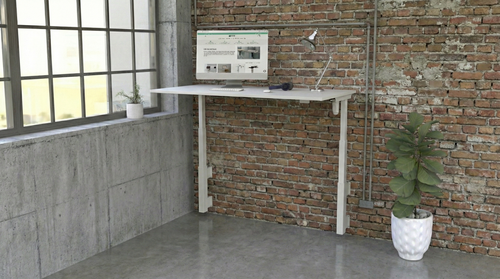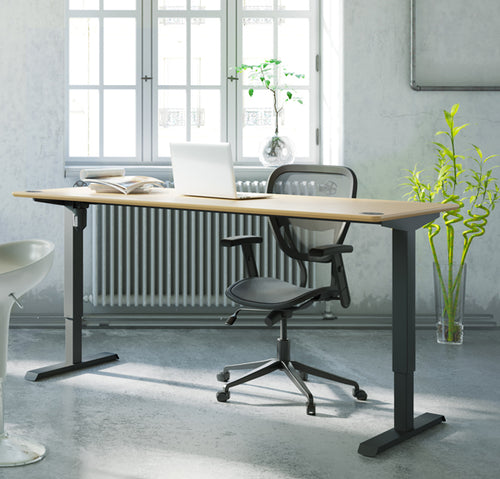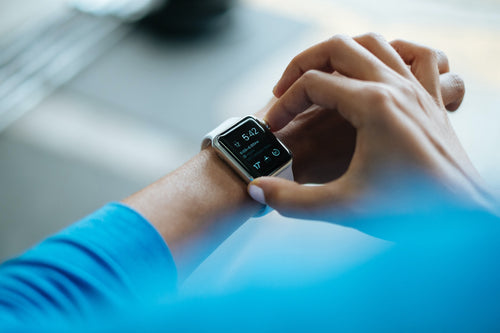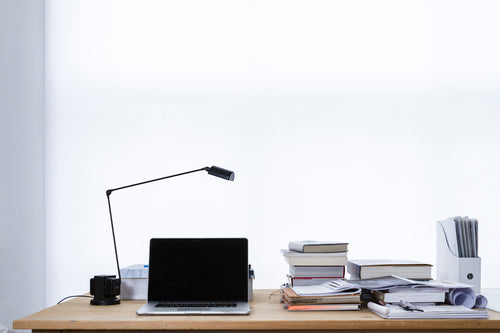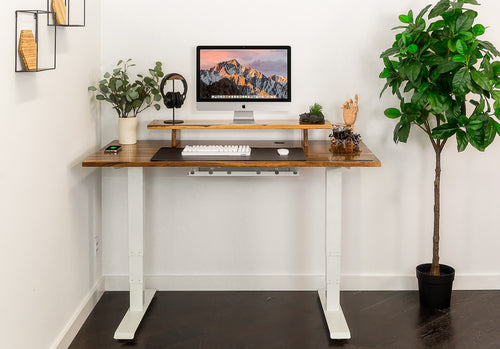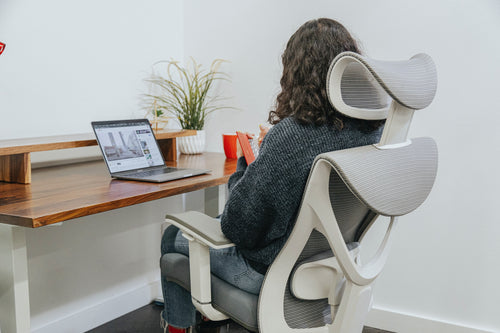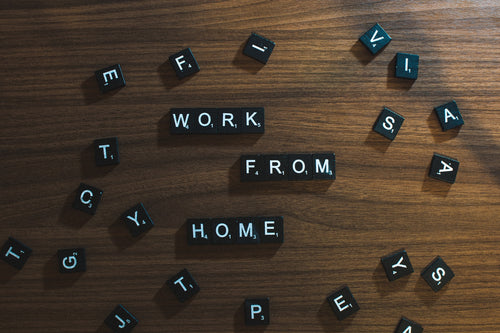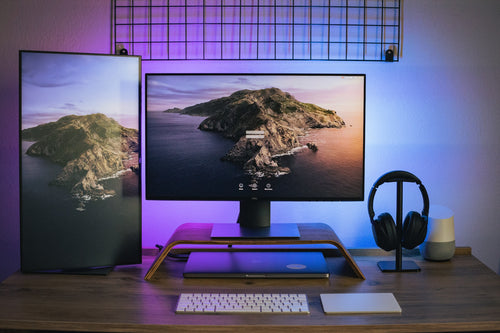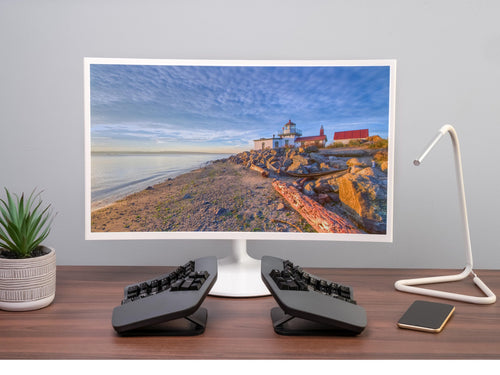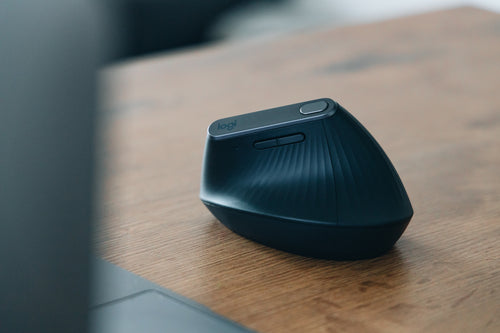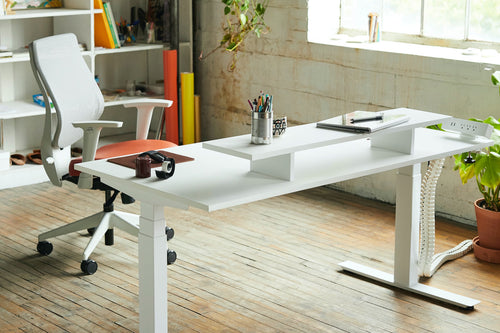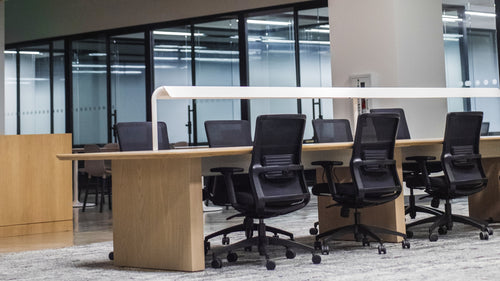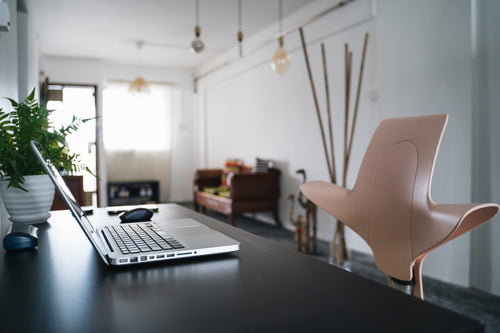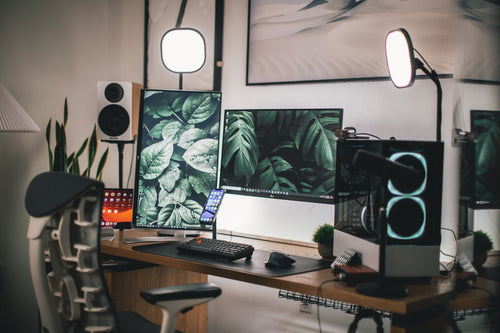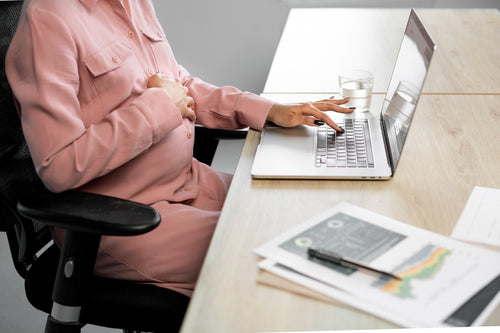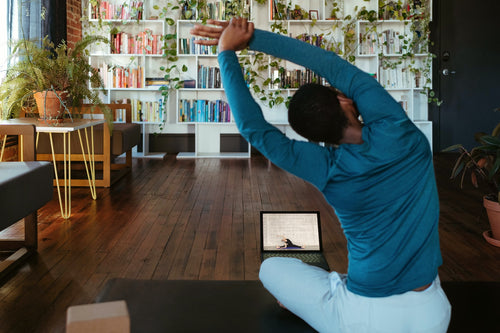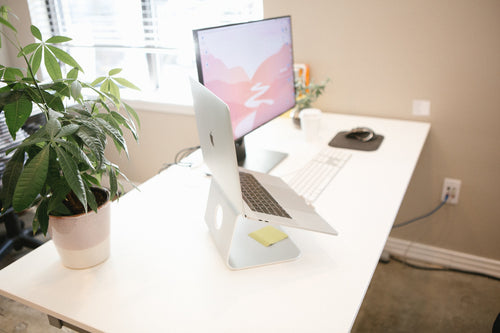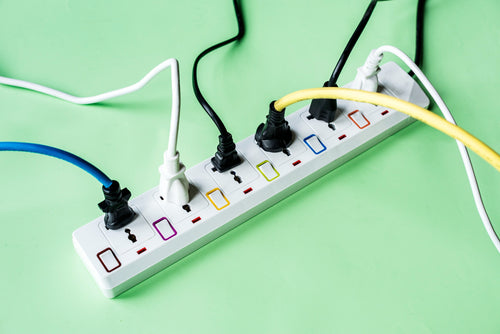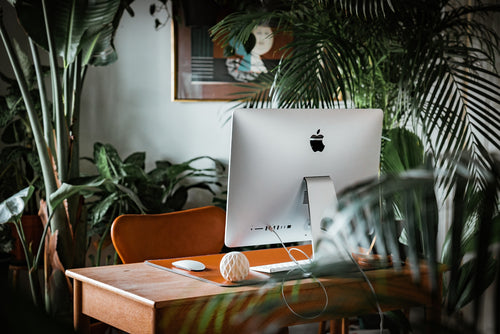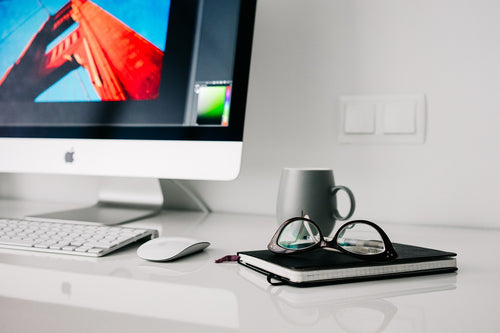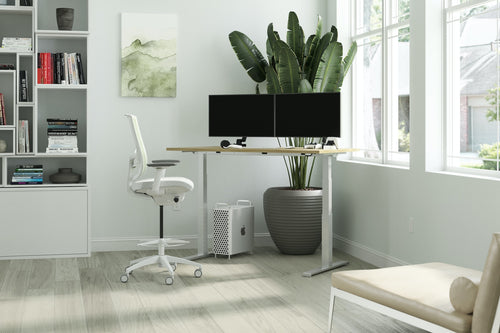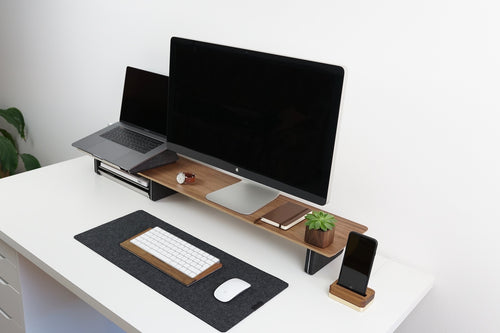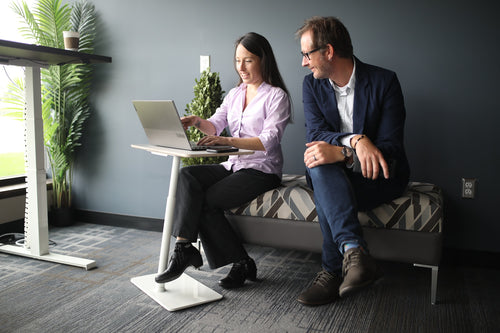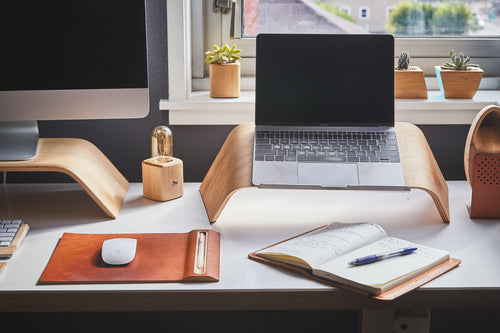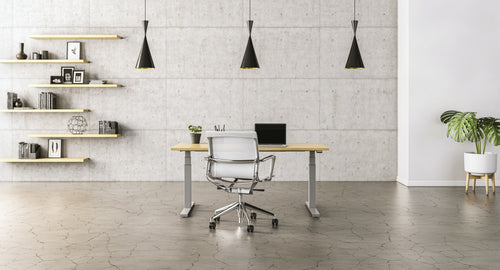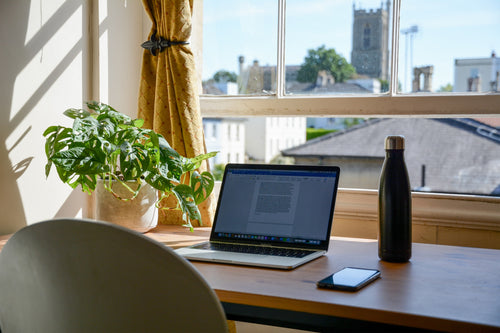If you spend most of your day working at a desk, you might have wondered whether standing or sitting is better for your health and productivity. After all, sitting for prolonged periods has been linked to various health risks, such as obesity, diabetes, and heart disease. On the other hand, standing for too long can also cause fatigue, discomfort, and lower back pain.
So, which option is the best for your well-being? In this article, we'll compare the pros and cons of standing and sitting desks, based on scientific evidence and expert opinions. We'll also give you some tips on how to find the optimal balance between the two and how to set up your workspace ergonomically.
The Benefits of Standing Desks
Standing desks have become increasingly popular in recent years, as more people are looking for ways to stay active and healthy while working. Here are some of the benefits of using a standing desk:
Increased Calorie Burn
According to a study by Mayo Clinic, standing can burn about 0.15 calories per minute more than sitting. This means that if you stand for four hours a day, you could burn an extra 30 calories. Over a year, that could add up to about 5.5 pounds of weight loss.
Improved Posture
Standing can help you maintain a better posture, as it engages your core muscles and aligns your spine. This can reduce the pressure on your lower back and neck, and prevent slouching and hunching. A study by Texas A&M University found that standing desk users reported less upper back and neck pain than sitting desk users.
Enhanced Energy and Focus
Standing can also boost your energy levels and alertness, as it increases blood flow and oxygen delivery to your brain and muscles. A study by the University of Leicester found that standing desk users reported higher levels of mood, enthusiasm, and vigour than sitting desk users. Another study by Washington State University found that standing desk users performed better on cognitive tasks than sitting desk users.
The Drawbacks of Standing Desks
While standing desks have many advantages, they also have some drawbacks that you should be aware of. Here are some of the potential downsides of using a standing desk:
Reduced Comfort and Relaxation
Standing for long periods can be tiring and uncomfortable, especially if you're not used to it or if you have pre-existing conditions such as arthritis or varicose veins. Some tasks, such as writing or detailed work, may also be more difficult or awkward to perform while standing.
Increased Joint and Muscle Strain
Standing can also put more stress on your joints and muscles, particularly in your legs, feet, and lower back. This can lead to inflammation, pain, and injury over time. A study by Curtin University found that standing desk users reported more lower limb discomfort than sitting desk users.
Limited Customizability and Ergonomics
Standing desks may not offer as much flexibility and adjustability as sitting desks, depending on the model and design. For instance, some standing desks may not have enough space or height for your monitor, keyboard, mouse, or other accessories. This can affect your posture and comfort while working.
How to Find the Best Balance Between Standing and Sitting
As you can see, both standing and sitting desks have their pros and cons. The key is to find the best balance between the two that suits your needs and preferences. Here are some tips on how to achieve that:
- Consider a Height-Adjustable Desk: A height-adjustable desk allows you to switch between sitting and standing throughout the day with ease. This way, you can enjoy the benefits of both options without the drawbacks of either one. You can also adjust the height according to your body type and comfort level.
- Incorporate Movement Breaks: Whether you use a standing or sitting desk, it's important to take regular breaks from your work to move around and stretch your muscles. This can help you prevent stiffness, soreness, and fatigue, as well as improve your circulation and metabolism. Aim for at least 5 minutes of movement every hour.
How to Set Up Your Workspace Ergonomically
Another crucial factor for your health and productivity is how you set up your workspace ergonomically. This means arranging your furniture and equipment in a way that supports your natural posture and reduces strain on your body. Here are some guidelines to follow:
- Align Your Screen with Your Eyes: Your monitor should be at eye level or slightly below, and about an arm's length away from you. This can help you avoid tilting your head or neck, which can cause tension and pain. You can use a monitor stand, a laptop riser, or some books to adjust the height of your screen.
- Position Your Keyboard and Mouse Properly: Your keyboard and mouse should be close to your body and at the same level as your elbows. This can help you keep your wrists straight and your arms relaxed, which can prevent carpal tunnel syndrome and other repetitive strain injuries. You can use a keyboard tray, a wrist rest, or a mouse pad to improve your comfort.
- Choose a Comfortable Chair: Your chair should support your lower back and allow you to sit with your feet flat on the floor and your knees at a 90-degree angle. This can help you maintain a natural curve in your spine and reduce pressure on your hips and legs. You can use a lumbar pillow, a footrest, or a cushion to enhance your chair.
Standing vs. sitting desks is not a black-and-white issue. Both options have their advantages and disadvantages, depending on your personal and professional goals. The best solution is to find the right balance between the two that works for you.
By following the tips in this article, you can optimize your workspace for your health and productivity. You can also experiment with different combinations of standing and sitting, and listen to your body's signals.
Remember, the best desk for you is the one that keeps you active, comfortable, and motivated throughout your workday.



